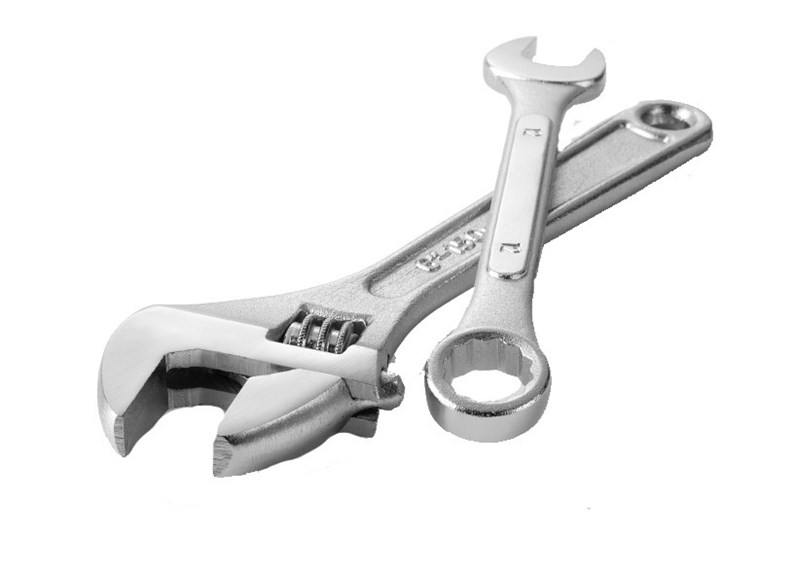You can't walk around in any community these days without spying a new construction project—rows upon rows of condos seem to go up overnight and there's no shortage of people looking to get while the getting is good on brand new buildings with fancy amenities, new windows and doors, and not a whiff of anyone else's previous ownership.
But a spanking new building isn't exempt from typical development problems—leaky faucets, drafty windows and thin walls can plague new buildings as well as old, no matter what promises the developers make when selling the units. And sometimes, problems that arise with new buildings are a lot worse than a running toilet. Shaky foundations, shoddy carpentry and sloppy finishing can all make a new building less valuable (and more soul-killing) than one that's been around since the 19th century.
Whose Fault Is It?
While it's true that the responsibility of a building's upkeep falls on the shareholders and management, it's hard to blame the new owner or management company for less-than-solid construction. After all, they usually have very little to do with the first stages of building (i.e., land surveys, sewage pipe tests, etc.) However, it's precisely this inexperience that can lead to conflict between unit owners and construction companies when a shiny new building shows flaws.
Dennis Estis, an attorney with Greenbaum, Rowe, Smith & Davis LLP in Woodbridge has represented a large number of condominium associations and cooperative corporations, and developers in numerous condominium construction cases for over two decades. "Expectations are usually much too high on the part of the unit owners, especially since they may not have had any experience with new construction," says Estis, who co-authored the New Jersey Condominium and Community Association Law (Gann Law Books), which is considered to be the authoritative text on the topic. "Thereafter, it becomes a combination of poorly drawn and/or inadequate plans and specifications; oversight during construction; poor workmanship by the contractors and/or their subcontractors; and inadequate review by the local building officials, as well as some other issues that are suis generis to construction in general."
Leaks, Tweaks
The list of potential problems in any building is large, but within new buildings, one problem tends to rear its head more than most. Andrew Amorosi is principal of The Falcon Group, an engineeringfirm in Bridgewater that provides civil and architectural engineeringservices to condominium, co-op and homeowner associations, as well as capital reserve analyses services. "The most common (or glaring) defect that we see always seems to be related to the lack of attention to detail related to the prevention of water infiltration into the building envelope," says Amorosi, whose firm also performs design services for re-construction projects. "This mainly relates to roof installations, siding, EIFS, Stucco, cultured stone or brick facade installations. Obviously water entering into the building envelope is a critical defect that needs to be repaired."
Estis agrees that water penetration through numerous locations including walls, roofs, windows and foundations, is the new building problem he sees the most.
So how does a new buyer avoid such problems? The best way to head off some of these issues before they happen is to be your own "unit detective" throughout the entire purchasing process, from start to finish.
At the beginning of the process, long before you're picking hardware for the bathroom, a buyer should pore over the "Description of Property" section of the offering plan. Relying on an advertisement, the spiel of a salesperson or a lovely rendering by an architect is no way to make a decision about your future home. Seek out the text of the offering plan that governs the sponsor's obligation regarding the size and the construction particulars—that's where a solid offer is going to shine, not in the pretty trees painted in the drawing of the courtyard.
Read the fine print under headings such as "Common Areas" and "Frame." Things like retaining walls, drainage systems and sidewalks are all to be found under the "Common Area" section and these details are vitally important—they dictate how your building will be built. It's up to you to ask any questions you might have. If you read something that looks odd, ask. No one is going to point out to you a fault in the plans. Also look at areas that cover landscaping—here's where your pretty trees in the courtyard come in—as well as text on recreational facilities, amenities and appliances.
The nature of construction is such that there can be no guarantee that a new home will be absolutely perfect. But for New Jerseyans, the New Home Warranty and Builders Registration Act, which is enforced through the New Home Warranty Program (NHWP), protects new homebuyers from defects. Under the New Home Warranty Program, all builders of new homes must issue a warranty. The warranty ensures certain standards and quality of construction for various components of your new home. The New Home Warranty Program also requires new homebuilders in the state to be registered with the Department of Consumer Affairs and provides assistance to both homebuilders and new homebuyers.
During the first year of a new home's warranty, warranty coverage extends to defective systems, workmanship, materials, plumbing, electrical and mechanical systems, appliances, fixtures, and equipment, and major structural defects. From the commencement date of the warranty up to two years from that date, the mechanical, electrical, and plumbing systems and major structural defects are covered. The builder is responsible for warranty coverage during the first two years. During the third through tenth years of coverage, only major structural defects are covered.
For defects that are covered under the warranty, homeowners should first file a claim through the warranty program rather than file a complaint with your local building department. The warranty program's goal is to correct the defect. They will either require the builder to repair any covered defect or, should the builder default, pay to have the defect corrected. Additionally, there are defects covered by the warranty program during the first and second year that would not be considered code violations by the building department. For example, problems with carpeting would be covered by the warranty program during the first year of coverage but would not be considered a code violation. The building department's role is to identify and have the code violation corrected but it cannot help you financially as the warranty program can. You should file a complaint with the building department for items that are either out of time for warranty coverage or for items not covered by the warranty.
Standards, Anyone?
If you're feeling a little overwhelmed, take heart. Though a smart buyer gets her hands dirty and strives to be informed, there are standards in place to help her avoid a lemon.
"The local municipal construction department usually 'inspects,' but does not 'oversee' residential construction," says Estis. "These departments work under the direction of the New Jersey Department of Community Affairs, Division of Codes and Standards. They are charged with initially reviewing the proposed plans and specifications to make certain that they meet the requirements of the Uniform Construction Code, requiring changes where they don't comply and then making inspections to presumably make certain that the work has been performed correctly."
And the new buyer should also feel good about buying a unit or a share in a building today, as opposed to one at less optimal construction eras. While he doesn't necessarily agree that there was a "golden age" in New York/New Jersey construction, Amorosi notes that however, "the 1980s was a time when condominium buildings were a relatively new entity—we saw service issues with some of the constructionduring those times.I think today we[see] less of that type of construction as the larger developers have learned from past mistakes." Amorosi adds that both new and old buildings alike have their problems: old mistakes are learned from and new mistakes present themselves.
"There are construction deficiencies found in both new and older buildings," he says. "The quality of the work typically begins with the quality of the design plans andthe methods or materials specifiedand ends with the competence of the contractor and, more importantly, with the supervision or inspection of the construction."
After The Fact
The inspection process is indeed a vital one, though most of the inspections that directly impact owners take place after the buildings are constructed. If you move into a building and then find yourself dealing with some of these new building problems, there is a system in place to help.
"Under the Uniform Construction Act of the State of New Jersey, builders/developers can be fined, be required to correct deficiencies and/or lose their builder's registration certificate," says Estis. To get that process going, the responsibility lies with the plaintiff, if you will.
"The person should first try and get the developer to make proper corrections. If that fails over a reasonable amount of time, the unit owner should seek to have the association's board of directors take affirmative action. If the board is still controlled by the sponsor, this may be a frivolous act and the unit owner may have to get his or her neighbors to create a fund to be able to pay an attorney. Recission is a very difficult remedy to get a court to order and it is more likely that a court would grant damages for the cost of repair."
Mary K. Fons is a freelance writer and performance artist living in Chicago, Illinois.







Leave a Comment